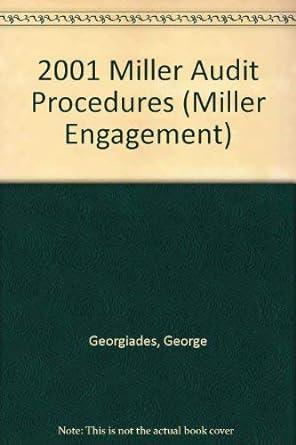Question
Assume a parent company owns a 100% controlling interest in its long-held subsidiary. The following excerpts are from the parents and subsidiarys pre-consolidation financial statements
Assume a parent company owns a 100% controlling interest in its long-held subsidiary. The following excerpts are from the parents and subsidiarys pre-consolidation financial statements and the consolidated financial statements for the year ending December 31, 2019:
| Income Statement | Parent | Subsidiary | Consolidated |
| Revenues | 4,147,000 | 2,856,000 | 6,484,000 |
| Cost of goods sold | (2,788,000) | (1,764,000) | (3,359,000) |
| Income from subsidiary | 240,000 | ||
| Selling general &administrative expenses | (1,200,000) | (907,500) | (2,107,000) |
| Balance Sheet | Parent |
| Subsidiary |
| Consolidated |
| Cash | 90,000 | 60,000 | 150,000 | ||
| Accounts receivable | 180,000 | 115,000 | 220,000 | ||
| Inventories | 198,000 | 152,000 | 293,000 | ||
| Equity Investment | 854,000 | ||||
| Property, plant & equipment | 1,275,000 | 930,000 | 2,205,000 | ||
| Goodwill | 80,000 | ||||
| Accounts payable | 118,000 | 86,000 | 154,000 | ||
| All other liabilities | 450,000 |
| 225,000 |
| 675,000 |
The parent sold inventories to the subsidiary during both 2018 and 2019. For these sales to the subsidiary, the parent earns a gross profit of 34%.
Calculate the amount of parent-company profit from intercompany inventory transactions that was in the subsidiarys beginning inventory on January 1, 2019.
Step by Step Solution
There are 3 Steps involved in it
Step: 1

Get Instant Access to Expert-Tailored Solutions
See step-by-step solutions with expert insights and AI powered tools for academic success
Step: 2

Step: 3

Ace Your Homework with AI
Get the answers you need in no time with our AI-driven, step-by-step assistance
Get Started


